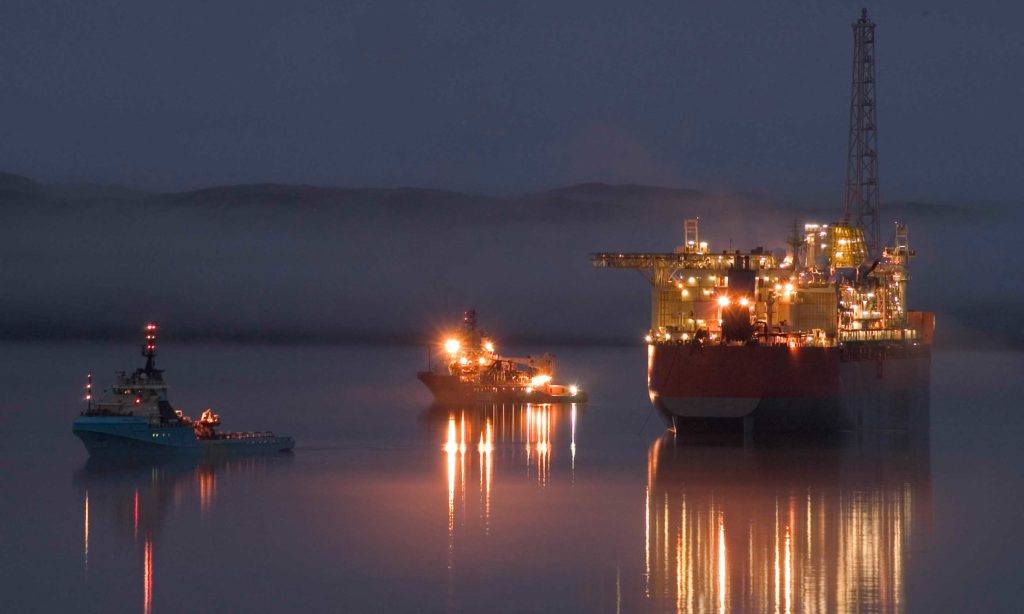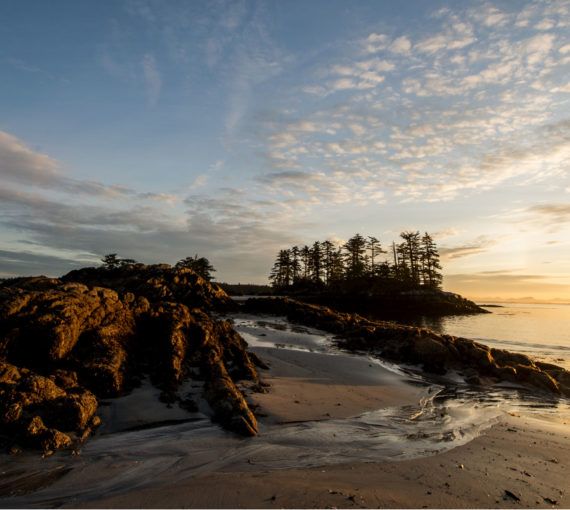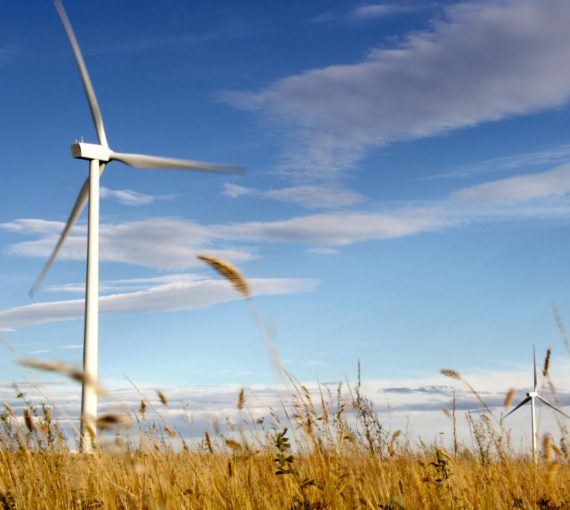The largest-ever oil spill off the coast of Newfoundland has come and almost gone from sight, with little fanfare and only a fraction of the notice it should have elicited.
Husky’s SeaRose platform leaked a quarter-million litres of oil into the Atlantic on Nov. 16. Having occurred during the worst storm in the world at the time, the spill avoided capture by TV cameras. The oil disappeared from sight over the course of four days, sparing coastal residents the image of a blackened coastline such as the one caused by the Exxon Valdez.
Due to weather conditions near the spill, even remote-sensing equipment was unable to record the 250,000 litres spilled into the ocean. Thanks to near-eight-metre waves and four days of storming, images of the fish, seabirds and other marine life affected by the oozing slick remain unseen. To date, just one image of the spill has been publicly released.
The spill has become an “out of sight, out of mind” PR home run for Husky. Meanwhile, government issued vague platitudes about self-regulation, instead of setting and enforcing real standards.
And so, we move on.
Not so fast.
Return to March 2017, when Husky continued operations at the same SeaRose platform while a massive iceberg approached, putting the operation, crew and marine environment at risk. Following that close call, the Canada-Newfoundland and Labrador Offshore Petroleum Board said it “lack(ed) full confidence” that Husky would take appropriate action in an emergency situation, and that Husky would need to “rebuild confidence.”
The spill has become an “out of sight, out of mind” PR home run for Husky. Meanwhile, government issued vague platitudes about self-regulation, instead of setting and enforcing real standards.
Husky Oil was found negligent in failing to shut down and move its platform out of harm’s way, instead playing an ill-advised game of chicken with an iceberg measuring 60 by 40 by eight metres, which dodged the SeaRose by less than 200 metres. The 84 people on board were ordered to “muster and to brace for impact.” Thankfully, the platform, crew and 340,000 barrels of oil on board were spared.
Husky CEO Rob Peabody said, “We could have, and should have, responded differently. … We will learn from this incident.” But even after being investigated and the SeaRose’s operations were suspended for nine days, Husky’s procedures appear unchanged.
Months later, CBC uncovered documents proving the decision to continue operations that day were “economically driven.”
Strike 1.
Return to Nov. 16, when in eight-metre (25-foot) waves and storm conditions that should, through common sense alone (i.e., without requiring a specific protocol), tell leadership to shut down, Husky again forged ahead, business as usual.
The result? A 250,000-litre spill — if you believe leak size estimates, which can’t be independently confirmed because the most intense storm on the planet continued to make the site impossible to approach with any vehicle, manned or unmanned, for four days. The spill dwarfed the previous record for eastern Canada of 165,000 litres.
Strike 2.
What to do, to avoid strike 3?
Regulators must set and monitor several conditions to help guide how companies operate in these types of dangerous, weather-contingent situations. If a storm makes the recovery of a potential spill impossible, stop pumping. If the conditions put your platform and crew at risk, shut down.
If private industry can’t be relied on to manage itself, government regulators must do so.
If private industry can’t be relied on to manage itself, government regulators must do so. In this case, if Husky won’t show some corporate contrition and clean up its act for the safety of workers, the company, and the planet’s oceans, the regulator should pull the company from the game.
Earlier this year, Newfoundland and Labrador announced a goal to double overall oil production to more than 650,000 barrels a day by 2030, including a target of 100 new exploration wells. This is in a region with some of the most volatile weather in the world. The Flemish Pass basin’s first project was also announced this year, a first foray into deepwater oil production at nearly 10 times the depth of the SeaRose, which is currently the region’s deepest offshore site.
The federal government is also considering allowing oil exploration and extraction in “marine protected areas.” And it’s possible that the semi-closed Gulf of Saint Lawrence will be opened to oil drilling. If such a spill were to occur in either of these places, the impacts would be devastating. What’s happened here in the Atlantic proves we cannot open the Gulf of Saint Lawrence, nor any marine protected area, to oil exploration or extraction activity.
And as Newfoundland and its oil-drilling partners look to expand wells, increase production, and foray into deep-sea drilling, it’s clear that the safety of crews and the surrounding marine environment must trump economic gains.
For Husky, a third strike simply is not an option.
This op-ed was originally published in iPolitics.
Our work
Always grounded in sound evidence, the David Suzuki Foundation empowers people to take action in their communities on the environmental challenges we collectively face.




